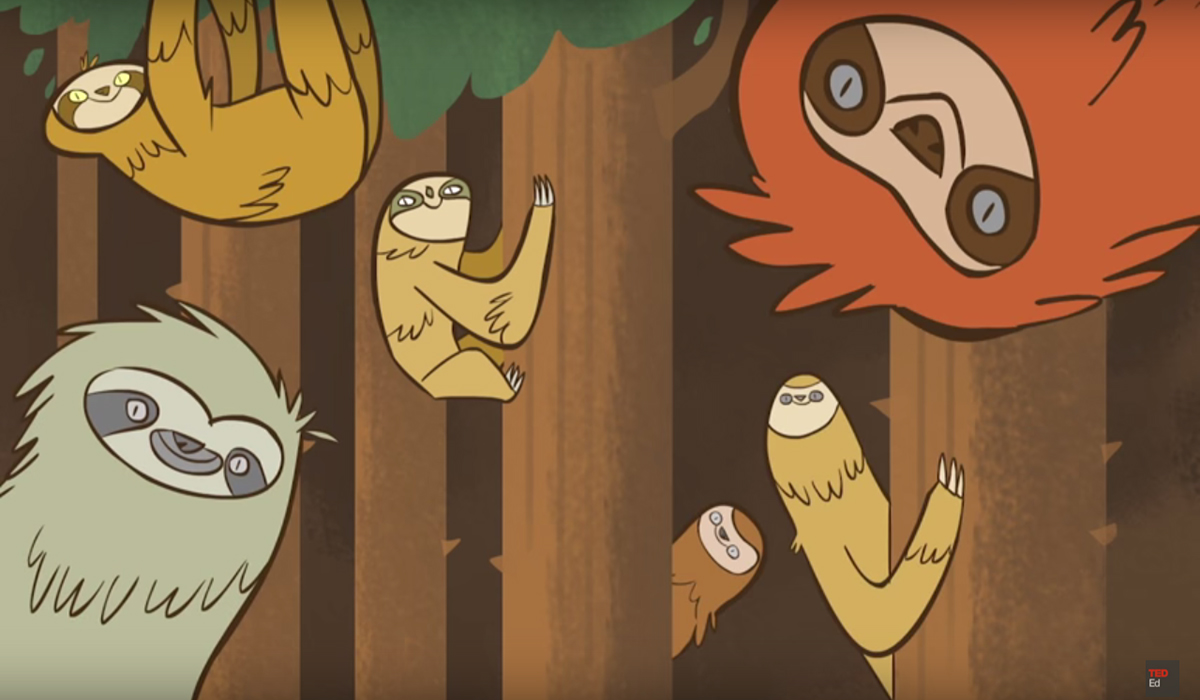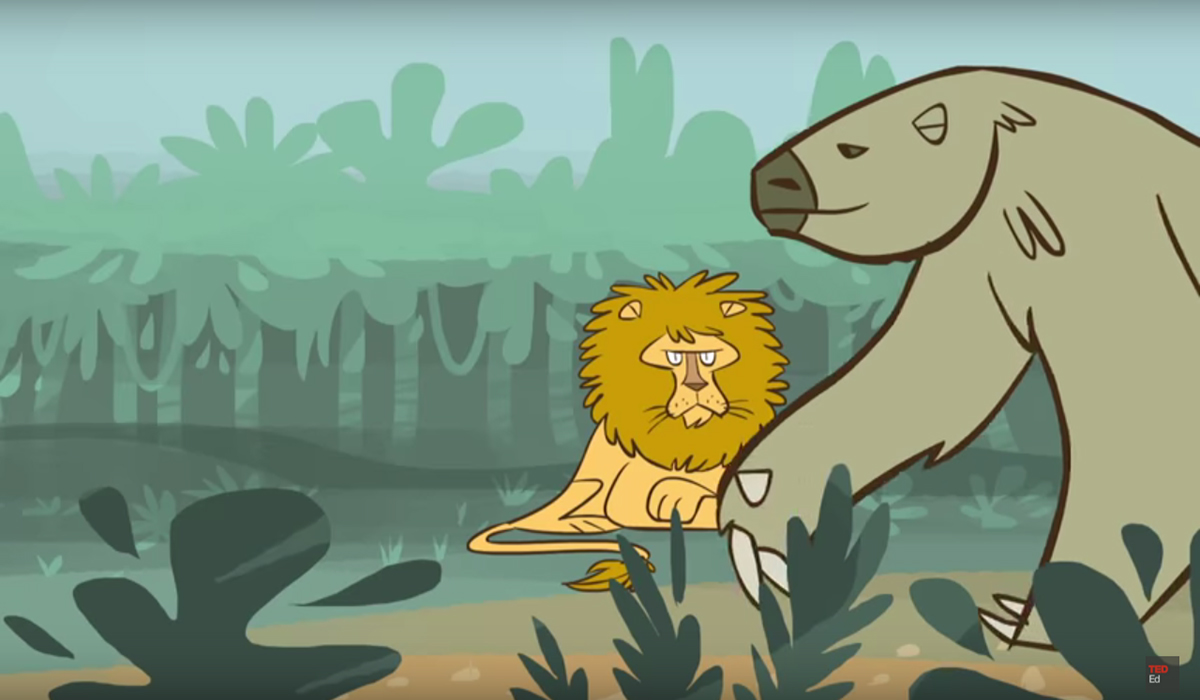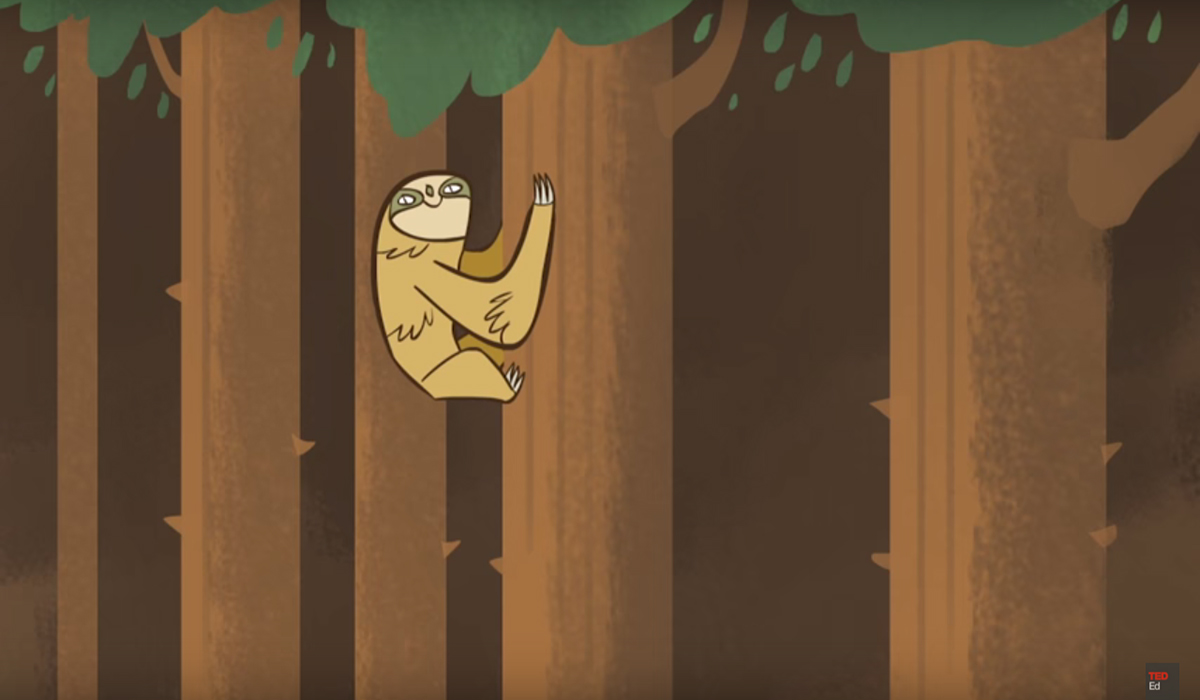Sloths are a particular animal. For some they’re cute, for others they’re odd and for many, they’re silly looking. One thing we all agree on is that they’re slow, really really slow. To the point that they’ve turned into a reference when we want to say someone or something is lazy or slow. With looking at Zootopia’s bureaucratic sloth’s reference is enough.
But even though they might not be the quickest guys around there’s a scientific explanation to it. Breaking through why these mammals move so damn slow, and why they look the way they do as well. As we give you this decoded explanation, of why they’re so slow, we also add some history and evolution of the sloth. Just to make you smarter and know sloth facts.

Let’s learn some history about sloth’s ancesters: Mega-slothius-Rex
During 1796, Thomas Jefferson received a box full of prehistoric unidentified bones. The large claws made him think that they belonged to a lion, but the long arms suggested they were from a larger animal. One about three meters long.
So he warned the explorer, Lewis and Clark, as he thought they were from a larger still unidentified species of North American lion. But the bones Jefferson had weren’t from a dangerous predator, they belonged to an extinct giant sloth. Who appeared in the world 35 million years ago. It lived mostly in America along with Mammoths and giant armadillos. There used to be dozens of species, but now as they evolved there are only six remaining.
Some of this ancient species of sloths, like the megalonychid, were the size of a cat. But many others were incredibly huge. The one Jefferson had its bones was a megalonyx, who weight a ton, but there were even bigger ones, like the megatherium who could reach six metric tons. That’s your average elephant. They lived in forests and savannas, as they used their strong arms and claws to uproot plants and climb into trees. Feeding mostly on leafs, grasses and prehistoric avocados, being one of the reasons we still have them nowadays. Due to their huge size, as they could swallow the avocado’s enormous seed and spread it through the whole continent.
Giant ground sloths flourished and roam the world during millions of years, but around 10.000 years ago they suddenly start to disappear. Along with many other gigantic mammals like the mammoth. Many scientific and researchers think that it might have been due to an oncoming ice age. Or maybe it was because of to the competition with other species, maybe humans who start appearing in the region at the time most giant sloths went extinct. Some of the smaller sloths who survived migrated to the top of the trees, giving birth to our modern sloths.

Sloths today, and the million dollar question
Of the six species left, they live in the rainforests of Central and South America. Today they still live in the top of the trees, keeping their evolutionary milestone move. As it’s a way to avoid predators and have tons of leafs to eat easily.
But their vegetarian diet, based on mostly leafs, has a major setback. Being the key reason to the explanation of why they are so slow. Animals extract their energy from their food, no mystery there. As they use this energy to move around, maintain their body temperature, keep organs working and pretty much staying alive. But leafs don’t contain much energy, and the little one they have is very hard to extract.
Since other vegetarian animals supplement their leafs with other highly energetic foods, like fruits, seeds, and nuts. But since sloths, especially three-toed ones, eat almost exclusively leafs their energy is low. So they’ve also evolved and developed strategies that cope to their low energy diet. Biologically, they have a multi-chamber stomach, that takes up a third of their body that takes as much energy from their food as possible. Processing it, depending on the species, can take five, seven or even weeks to digest a meal. Strategically, they try to save all the energy they can. They do this by not moving too much, as they spend most of their time resting, sleeping or eating. As they only leave the treetops for a “bathroom break,” once a week.
So when they do move they don’t do it very fast. This “static lifestyle,” of the sloths means they don’t need a lot of muscle. They have about 30% less muscle mass than other animals of their same size. Also, their lack of move helps them save energy and keep their body temperature warm. These behavior routines and biological changes make the sloth’s energy expenditure to minimize their metabolic rate. Turning it into the mammal with the slowest metabolism. All these evolutive adaptations have helped the sloths survive, showing us that being a bit lazy can be good sometimes.




Loading…